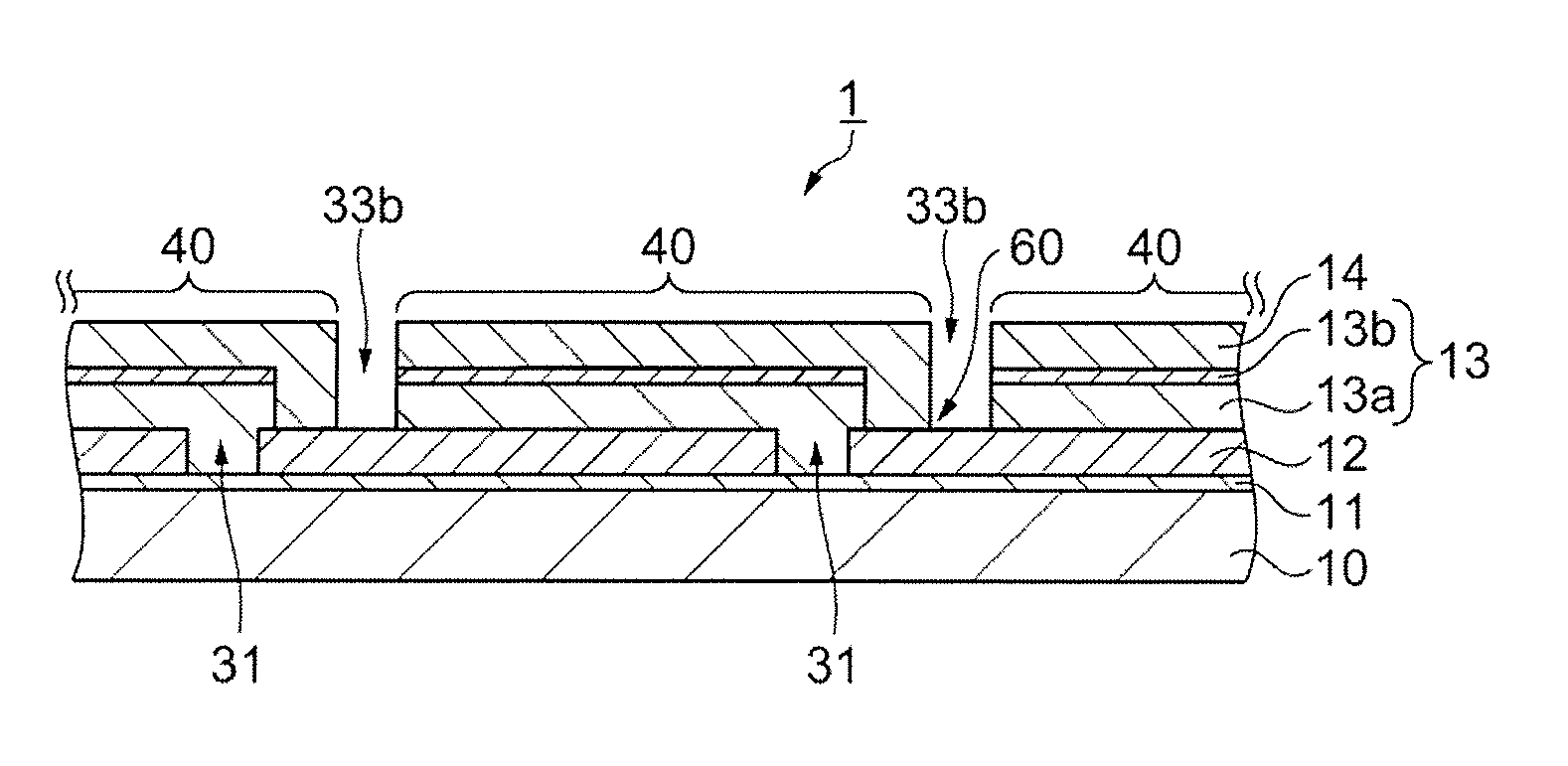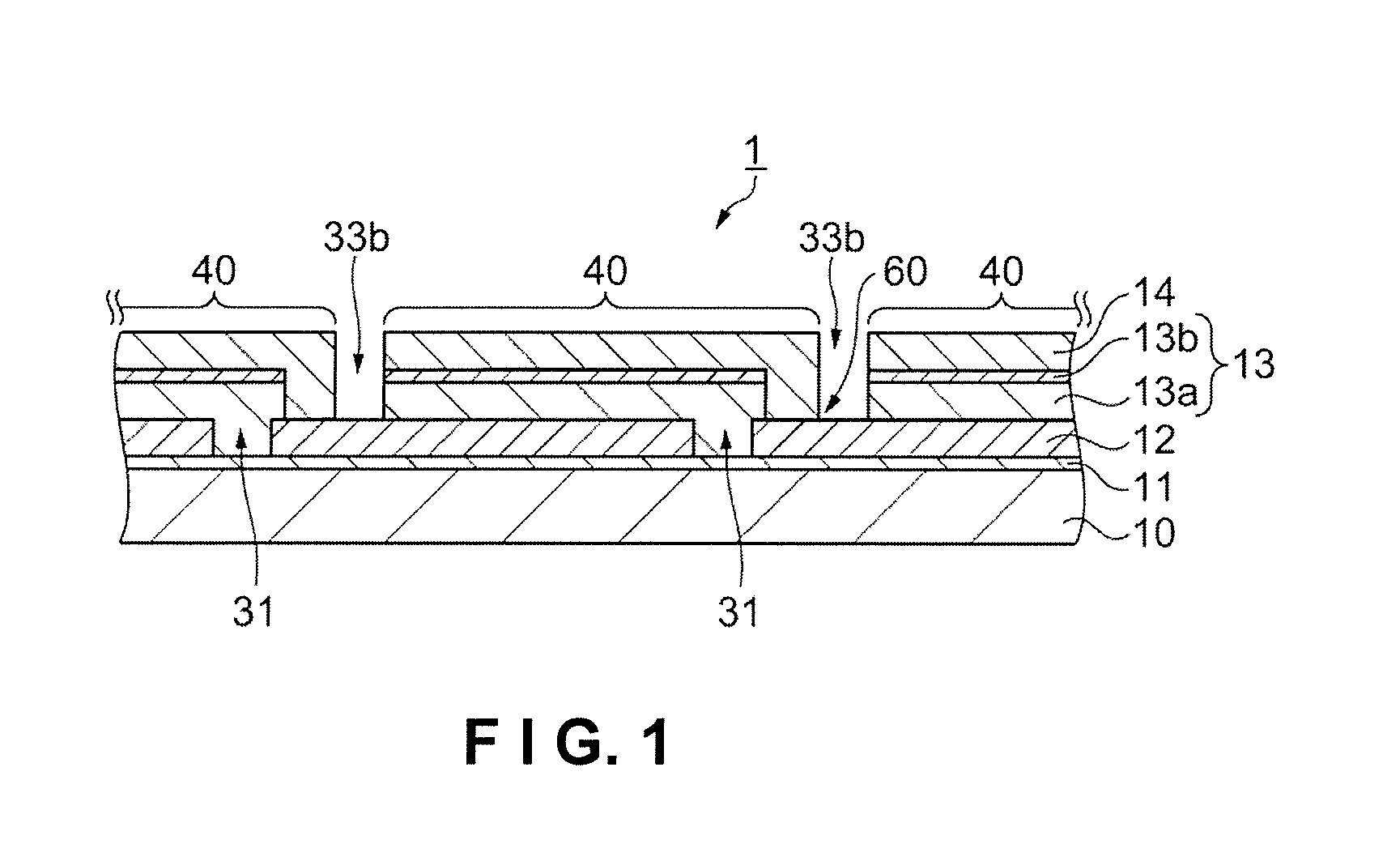Solar cell and method for manufacturing solar cell
- Summary
- Abstract
- Description
- Claims
- Application Information
AI Technical Summary
Benefits of technology
Problems solved by technology
Method used
Image
Examples
modification 1
[0058
[0059]In the embodiment described above, the liquid material 12A including a first electrode material for forming the first electrode layer 12, as well as the other liquid materials, are applied using a printing method, an inkjet method, or another method, but this configuration is not limiting. For example, the liquid material 12A may be applied to the substrate 10 by a dipping method. Even when such a method is employed, because the partition portions 50 are fluid-repellent, the partition portions 50 repel the liquid material 12A, and the liquid material 12A can be applied in a predetermined region. A dipping method may be used to apply the other liquid materials 13aA, 13bA, and 14A as well.
modification 2
[0060
[0061]First through third partition portion formation steps are described in the embodiment above, but a configuration may also be adopted in which at least one partition portion formation step is performed, and the other partition portion formation steps are omitted. The scribing process can be eliminated in this configuration as well, and damage to other members can be reduced.
modification 3
[0062
[0063]In the embodiment described above, a description is provided of the structure and other aspects of a CIGS-type solar cell 1, for receiving light from the side of the second electrode layer 14, but the solar cell 1, may also be a CIGS-type solar cell 1 that is capable of receiving light from the side of the substrate 10 as well as from the side of the second electrode layer 14. In this case, a transparent substrate is used as the substrate 10. For example, a glass substrate, a PET substrate, an organic transparent substrate, or the like may be used. Using a transparent substrate enables light to be received from the surface of the substrate 10. The first electrode layer 12 is a transparent electrode layer, and is a ZnOAl or other transparent electrode (TCO: transparent conducting oxides) layer, for example. By forming a transparent electrode layer, light that is incident from the side of the substrate 10 can be made to pass through to the semiconductor layer 13. The same e...
PUM
 Login to View More
Login to View More Abstract
Description
Claims
Application Information
 Login to View More
Login to View More - R&D
- Intellectual Property
- Life Sciences
- Materials
- Tech Scout
- Unparalleled Data Quality
- Higher Quality Content
- 60% Fewer Hallucinations
Browse by: Latest US Patents, China's latest patents, Technical Efficacy Thesaurus, Application Domain, Technology Topic, Popular Technical Reports.
© 2025 PatSnap. All rights reserved.Legal|Privacy policy|Modern Slavery Act Transparency Statement|Sitemap|About US| Contact US: help@patsnap.com



